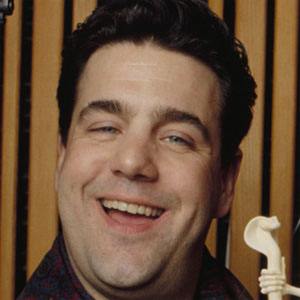

And now I have the responsibility to share that experience – to describe what we’ve created together, beyond just the physical homes, or even the hope for a stronger, more unified image of God in humanity. I’ve had the privilege to hear how people have reacted to it. I’ve had the opportunity to see and hear the process of its construction from beginning to end. The house is complete, has been dedicated, and will soon become a home.
Jonathan freeman how to#
In my previous post, I discussed the practical value of working alongside people from different backgrounds as a way of pursuing our Biblical conviction in learning how to “ maintain constant love for one another.”Īs I write this post, I sit on the other end of that work. Jonathan is a Young Adult Volunteer (YAV) spending his service year with Greater Indy Habitat through the Presbyterian Church (USA). Set Apart By Jonathan Freeman | Interfaith | It needs to be made into a home, and that’s why homes are the first thing Habitat builds.Ĭheck back later this month for Jonathan’s next post reflecting on communities. They provide a brand new foundation from which things seem possible which may not have even been considerable before. The homes these families build change their lives.


What makes them homes, and what Habitat takes the utmost care to do, is the compassionate attention given to each family in the program, and each structure they build. It’s not cheap, but it’s available almost everywhere today. It’s not that difficult to build houses to run a blueprint through a conveyor belt and give people four walls and a roof. They take the time to understand the needs of the homeowner, and demonstrate the necessary investment to care for those needs. Habitat forms relationships with their homeowners. It’s a place where they can find fellowship and freedom. It’s a place where they can find respite and revitalization. For many of our homeowners, the structure we build together is a place where their families can be safe. Withers, a house is where he lives, but a home is where he and this woman who brought sunshine to his life could be together. Perhaps Bill Withers put it best when he sang, “And this house just ain’t no home, anytime she goes away.” There is a distinct difference between a house and a home. This being the first installment in the series, I want to start by looking at the first object of Habitat’s missional building: homes. With my final three blog posts as this year’s Greater Indy Habitat YAV, that’s precisely what I want to do. But if one really takes the time to dissect and consider the pieces of it, they may realize there’s more to it than initially appears. I don’t think most people with a passing familiarity with Habitat would be surprised by anything in it. “Seeking to put God’s love into action, Habitat for Humanity brings people together to build homes, communities and hope.” That was before I’d ever heard their mission statement, and more significantly, before I became a small part of the mission in that statement. In my mind, at that time, Habitat was just a particularly generous construction crew. If I had asked myself the same question a year ago – a clichéd premise, I know – I probably would have seconded Mikey as well. My friend Mikey, responding in a group chat in which I’d posed the question, said that they “build houses for low-income families.” Moments later, another friend in that group posted, “I second Mikey.” “Helps habitate humans?” my brother, who studied linguistics, suggested. So, in trying to begin to reflect on how my experience here has influenced my understanding of service, I recently asked a few friends how they would describe Habitat’s work. In a “year-long” volunteer program that actually only lasts eleven months, I already have ten elevenths of what is meant to be a life-altering program on which to reflect, and I’m not sure where to start. I’ve been with Greater Indy Habitat for ten months now. Learn more about the YAV program! Mission Part 1: Homes A Look Back: Homes By Jonathan Freeman | Volunteer |


 0 kommentar(er)
0 kommentar(er)
